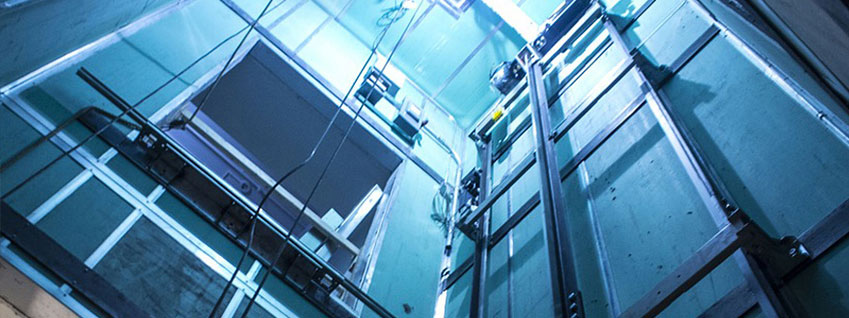Discover Reliable Lift Repair Near Me for Fast and Affordable Service
Discover Reliable Lift Repair Near Me for Fast and Affordable Service
Blog Article
Looking Into the World of Lifts: Typical Concerns Encountered by Numerous Lift Devices
As we navigate via the vertical transportation systems of modern-day structures, elevators stand out as an essential element of our daily lives. From hydraulic lifts to grip systems and machine-room-less layouts, each lift type comes with its collection of usual concerns.
Hydraulic Elevators
Hydraulic elevators, usually favored for low-rise structures, make use of fluid pressure to control the movement of the lift automobile (lift repair companies). This device includes a hydraulic pump pushing oil into a cyndrical tube, causing the elevator to move in the preferred instructions. While hydraulic lifts are known for their quiet and smooth operation, they do include their own collection of typical problems
One widespread trouble with hydraulic lifts is oil leakage. In addition, problems with the control system, such as damaged shutoffs or a malfunctioning pump, can cause interruptions in the lift's movement.
Regular upkeep and timely repair work are important to make certain the smooth performance of hydraulic lifts. By resolving these usual problems proactively, building proprietors can decrease downtime and make certain the security and efficiency of their upright transportation system.
Traction Lifts
When considering vertical transport systems in buildings, an additional typical kind apart from hydraulic elevators is the grip elevator. Grip elevators run using a system of ropes and weights that relocate the lift automobile by grasping onto the hoist ropes. This system allows for smoother and faster upright transport compared to hydraulic systems.
One of the typical concerns dealt with by grip elevators is rope wear. The continuous activity of the ropes within the traction system can bring about tear and put on with time, possibly creating the lift to breakdown or end up being unsafe for use. Normal inspections and maintenance of the ropes are important to ensure the lift's proper performance and safety and security.
One more issue that traction elevators may encounter is connected to the control system. Issues with the control system can lead to issues such as erratic motion, hold-ups in feedback times, and even complete shutdowns. Regular screening and upkeep of the control system are essential to protect against such concerns and make certain the lift's reliability.
Machine-Room-Less (MRL) Lifts

One of the key parts of MRL elevators is the portable gearless traction equipment that is mounted see within the hoistway. This equipment effectively drives the elevator auto without the requirement for large equipment discovered in typical grip elevators. In addition, MRL elevators normally utilize a weight system to stabilize the vehicle, further enhancing their power efficiency.
In spite of their benefits, MRL elevators may deal with difficulties related to repair and maintenance as a result of the restricted space for tools installation. Access for servicing elements within the shaft can be restricted, needing specialized training for specialists. Correct maintenance routines and routine inspections are crucial to make certain the ongoing smooth operation of MRL lifts.
Overloading and Weight Restriction Issues
Are elevators equipped to deal with excess weight lots successfully and safely? Overloading and weight limit concerns are crucial worries in elevator procedures. Lift makers style lifts with specific weight abilities to make sure passenger safety and security and equipment long life. Exceeding these weight limitations can cause various troubles, consisting of mechanical failings, delays, and security risks.
When lifts are overwhelmed, it places excessive stress on the electric motor, wires, and various other parts, potentially creating malfunctions or malfunctions. Safety and security mechanisms such as sensing units and overload sensors are in area to avoid elevators from relocating if they spot excess weight. Additionally, surpassing weight limitations can lead to increased power intake and wear and tear on the elevator system.
To minimize straining problems, constructing managers need to prominently display weight restrictions in lifts and enlighten passengers on the significance of sticking to these limitations - lift repair companies. Regular maintenance checks by certified technicians can additionally assist make certain that elevators are operating within secure weight parameters. By addressing overloading and weight limit issues proactively, building owners can boost elevator safety and efficiency
Electrical System Failures
Surpassing weight restrictions in lifts can not only cause mechanical concerns yet additionally possibly add to electric system failings within the lift framework. Electrical system failures are an essential concern in elevator operation, as they can cause unexpected shutdowns, breakdowns, or perhaps safety threats. One typical electric concern is the getting too this content hot of components as a result of extreme existing flow brought on by overloading the elevator beyond its capability. This can result in damage to the control, wiring, or motor systems, resulting in expensive fixings and downtime.
Normal maintenance and inspections are vital to identify and resolve prospective electrical concerns quickly, guaranteeing the efficient and risk-free procedure of elevator systems. By sticking to weight limits and performing regular electrical system checks, building proprietors can alleviate the threat of electric failings in lifts.
Conclusion

Hydraulic lifts, commonly preferred for low-rise buildings, use fluid pressure to regulate the movement of the elevator auto.When thinking about upright transportation systems in buildings, one more usual kind aside from hydraulic lifts is the grip elevator. Grip elevators operate using a system of ropes and counterweights that relocate the elevator cars and truck by grasping onto the hoist ropes. Unlike traditional lifts that need a separate equipment space to house the devices, MRL lifts incorporate most of the parts within the shaft, removing the demand for a dedicated machine space.In conclusion, lifts deal with common problems such as hydraulic breakdowns, grip system failings, and electric system issues.
Report this page